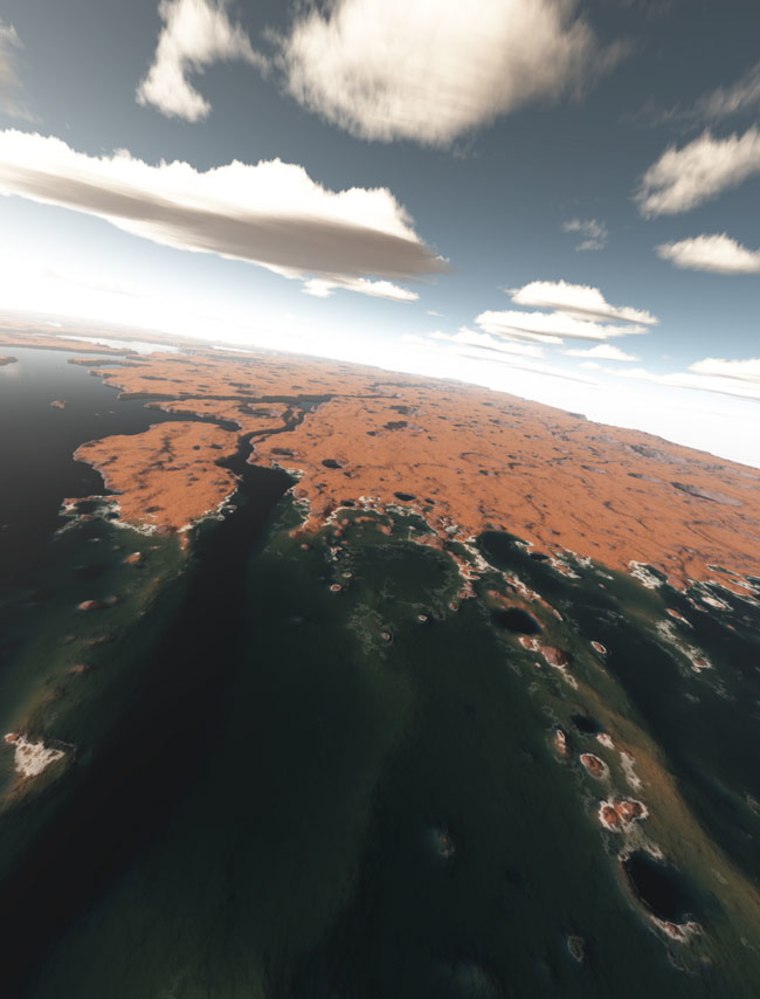The seas and lakes thought to have filled the basins of ancient Mars could have emerged from cracks in the ground, scientists now suggest.
Although Mars is cold and dry today, water is thought to have covered much of the Red Planet in the distant past. This could explain, for instance, why the northern lowlands hold extensive sedimentary deposits that resemble those seen in the abyssal plains of Earth's ocean floors.
The origin of these deposits is controversial. One theory suggests ancient Mars' oceans formed after huge volumes of water and sediment were suddenly released from zones of collapsed crust known as chaotic terrains. However, these zones of collapse are rare on Mars on the whole, while the plains deposits are widespread.
A new study suggests this water emerged from aquifers, through extensive and widespread fractures in the floors of continent-scale Martian basins. Frequent, long-lived discharges of groundwater would lead to the development of river systems and cause large-scale regional erosion, sedimentary deposits and water ponding, the research scientists say.
"In addition, our model indicates this could have happened at any point in the planet's history," said J. Alexis Palmero Rodriguez at the Planetary Science Institute in Tucson, Ariz. "There could have been many oceans on Mars over time."
Evidence in the Red Planet's northern plains south of Gemini Scopuli in Planum Boreum suggests that it was not massive, sudden outflows of water that formed the oceans, Rodriguez said. Instead, water seeped up from underground over time, and "areas of the northern plains ultimately collapsed, creating the rough hilly surfaces we see today," he said.
"Some plateaus may have avoided this fate and preserved sedimentary plains containing an immense record of hydrologic activity," Rodriguez added. "The geologic record in the collapsed hilly regions would have been jumbled and largely lost."
These new findings could shed light on the nature of any seas that once covered Mars. It remains uncertain, for instance, whether they would have been warm or cold.
Also, if life existed underground on Mars, these discharges of water could have brought it up to the surface. Organisms and their fossils may therefore be preserved within some of these sedimentary deposits, Rodriguez said.
Rodriguez and his colleagues will detail their findings in the November issue of the journal Icarus.
